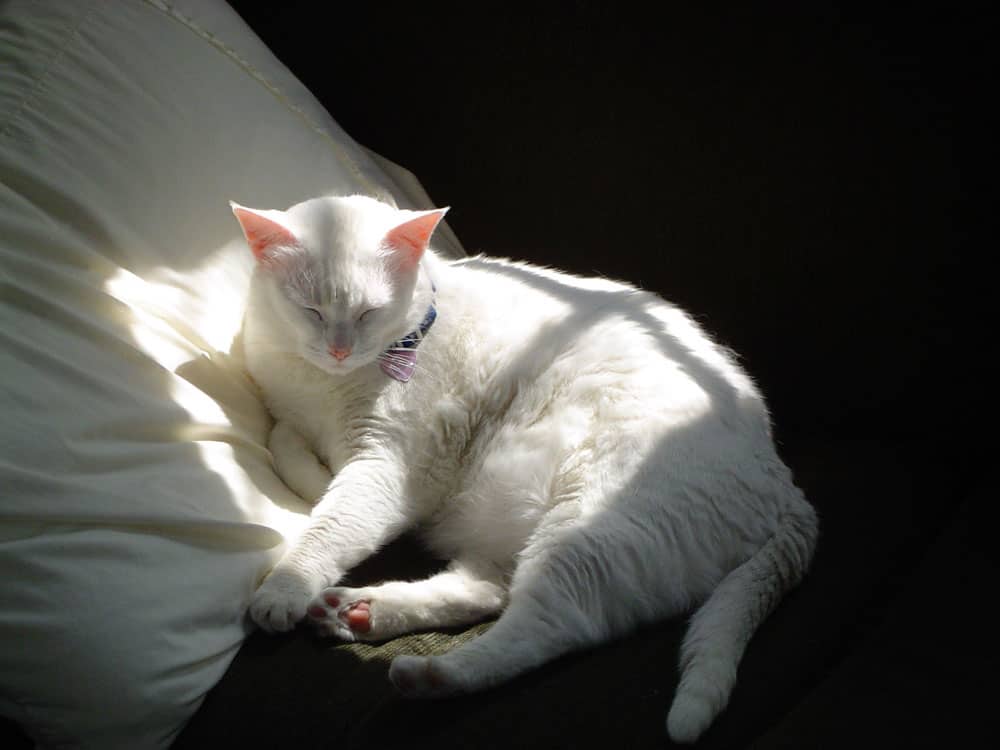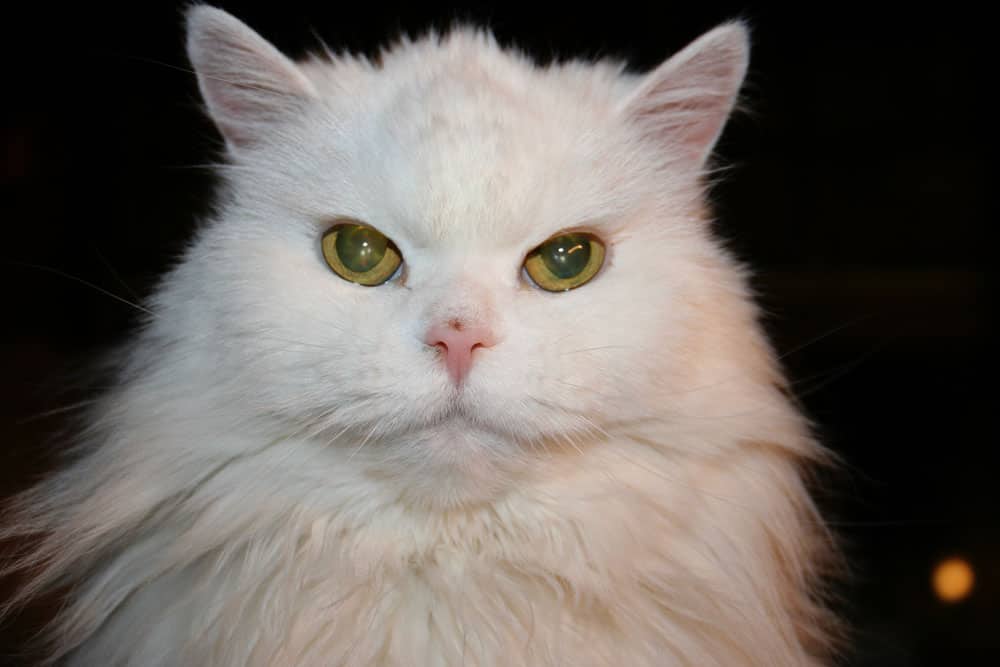Pets can be a wonderful addition to a home: they fill the need for companionship or even friendship. Having a pet in your house might brighten up your home and fill your life with joy. The choice of pet you decide to keep depends on what animal you like.
The most common pets people keep are dogs and cats. Recent studies from American Veterinary Medical Association states that about 25 % of US households keep cats as pets.
Many people love these furry felines, and they find their naughty, playful and curious nature adorable. Cats’ intelligent nature is part of their charm and a big reason why many people cats as pets.
Cats come in a variety of coloring and fur patterns. One cat coloring is the all-white cat.
What causes cats to have a white coat?
White cats have a dominant gene that makes them have white fur, which is an allelomorph of KIT that suppresses pigmentation hence the white fur.
The cat might have a different underlying color or pattern but will not exhibit the design in the skin if the dominant gene is white.

A homozygous (WW)/heterozygous (Ww) cat for this white gene will present a white coat even if the underlying color or pattern is different. Related: White Spotting in Cats
Any cat that does not have the dominant (Ww ) gene will have a colored or pattern coat. This KIT mutation can also be exhibited in humans, whereby people have patchy depigmentation, including different iris colors.
Are white cats always deaf?
Unfortunately for white cats, the same gene that gives them a beautiful white coat can come with some shortcomings. Deafness in cats is primarily observed in white cats, present from birth (inherited congenital). Congenital deafness is a result of degeneration of the auditory apparatus, which are found in the cat’s inner ear.
Breeding studies suggest that the KIT gene is responsible for deafness in white cats. The gene is considered to be pleiotropic. In simple terms, this means the gene produces more than a single outcome. In some cases, the masking gene can cause blue eyes, odd-eyed cats, and deafness in white cats.
ASPCA states that almost 18 % of white cats that don’t have blue eyes are deaf, and about 40 % of white cats with odd eyes that have one blue eye are deaf. Furthermore, 85 % of white cats with eyes that are blue in color are deaf. The research stated above does not necessarily show that all white cats have deafness; it simply indicates that deafness is strongly related to white cats. Interplay with other genes may, and environment may also play a role in deafness.
Do you need to apply sunscreen to white cats?
Applying sunscreen is an essential daily task for people who want to protect their skins from the sun’s damaging rays. Should the same ritual be extended to our feline friends? Even though some cats have fur acting as a layer of protection, exposed parts of their skin, i.e., nose or ears, are vulnerable to sunburn, mainly white cats.

White cats can suffer severe skin damage from the sun leading to the risk of skin cancer. Pre-cancerous cells can develop if you don’t take care of your pet’s skin. To ensure your cat’s safety from harmful UV rays, here are a few measures you can undertake.
Apply sunscreen to your cat: Before applying sunscreen to your cat, seek a vet’s help so they can advise you on the best sunscreen for your cat and the best way to apply it.
Provide shade if your cat goes outside: Planting trees and bushes is not only good for the environment, it can also offer your pets shade when they nap.
Keep them inside: If you find the above two methods hard, you can keep your cat indoors, especially during hot parts of the month or day.
Different types of white cats
White cats are a rare breed of cats since a few of them exist compared to other breeds of cats. If you are searching for a pure white cat read on and discover just a few of the types of breeds that can have white fur.
Birman: This type of white cat is highly social and playful. They are medium in length with a silky type of coat that doesn’t mat. They are distinct from most white cats because of their pearl blue eyes.
Egyptian Mau: Rare as their name, this exquisite cat appears muscular with short hair with dark stripes mostly on the edges of ears. Egyptian Mau cats love moving around and exercising hence their muscular nature.

Himalayan: Himalayan cats have a round head with a short nose and ears. They strongly resemble Persian cats with their blue eyes and long fur. Surprisingly enough, all Himalayan cats have blue eyes.
Ragdoll: This feline friend is medium in size and length, has silky fur with lighter shading. They mostly have short tails; they are very playful and enjoy sitting in their owners’ laps. A Fun fact, these cats were named ragdoll because of the way they collapse into their keepers’ hands.
Find an all white Manx cat is rare.
These are some of the few types of white cats to choose from. There are various white cats to pick from that come in different shapes, sizes, and patterns. Having a feline friend can be fantastic because these creatures know how to show affection. They may demand attention which might seem like a bad thing at first, but you will be happy to give it due to their loyalty, playfulness, and positive vibes they give.
References
Cat genetics 2.0: Colours. (2016, June 17). Laboratoire de génétique vétérinaire. https://labgenvet.ca/en/cat-genetics-2-0-colours/
Dominant white & white spotting. (n.d.). Veterinary Genetics Laboratory. https://vgl.ucdavis.edu/test/dominant-white-cat
Inherited deafness in white cats. (2019, October 6). International Cat Care | The ultimate resource on feline health and welfare. https://icatcare.org/advice/inherited-deafness-in-white-cats/
Richards J (1999). ASPCA Complete Guide to Cats: Everything You Need to Know About Choosing and Caring for Your Pet. Chronicle Books. p. 71. ISBN 9780811819299.
Strain, G. M. (2007). Deafness in blue-eyed white cats: the uphill road to solving polygenic disorders. Veterinary Journal, 173(3), 471-472. DOI: 10.1016/j.tvjl.2006.01.015






